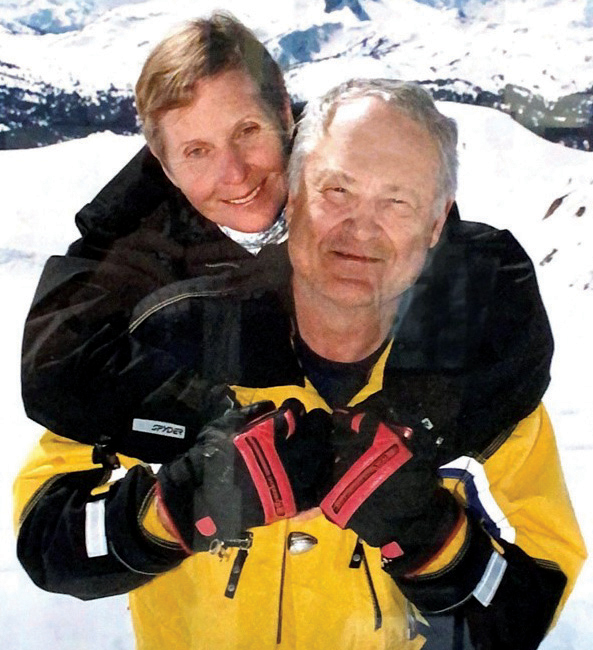Dr Orest Ivan Porayko, 1938–2022

Dr Orest Ivan Porayko, aka “Opey,” “Opa,” and “Uncle Chupy,” died in his home next to his wife of 60 years on 30 September 2022.
Orest was born in Vegreville, Alberta, on 3 August 1938. He grew up in an austere household, the third youngest of 8 siblings. He excelled in academia and athletics, which led him to the University of Alberta, where he studied science and played college football.
Orest worked hard to get accepted to the U of A’s medical school in 1959 and graduated with his MD in 1963. After an internship, he applied for a neurosurgical residency, and along with the grueling clinical work, he also completed his master’s degree in surgery, with a research focus on spinal cord regeneration therapies.
Along the way, he met a beautiful young nurse from Moose Jaw named Marlene. They married in 1965. Three sons would soon follow (poor Marlene had to deal with far too many Y chromosomes in the Porayko household).
Shortly after completing his residency, Orest accepted a job at Royal Columbian Hospital in New Westminster and settled into a house in Coquitlam. He treated thousands of grateful patients, some of whom I would come across in my own medical practice decades later. They would always tell me about his kindness and attention to detail.
Orest was a man of few words, and this, along with his stocky build, often intimidated people. His gruff facade belied a gentle, generous heart and a strong sense of ironic humor. He gave all the time he had to his family and very rarely indulged himself. As his children, we remember him showing up at weekend judo tournaments with his pager on his hip, massaging our shoulders before it was our turn to fight.
Until he became ill, Orest was very active. He loved his swimming pool, doing dozens of laps after work in the spring and summer. He played pickleball for endless hours. Well into his 70s, he skied down double black diamond runs at Whistler Blackcomb and often insisted on dragging his family up the hill to ski in all sorts of horrendous weather. He was extremely physically strong, which was helpful when he and Marlene bought property on Gambier Island Sea Ranch and pitched in with farm duties. He loved taking care of the animals on the farm and taking his dogs for long walks in the forest.
Orest was the protagonist in a story that is often ascribed to urban legend but is quite true. Around the turn of the century, he was hiking with his wife near Whistler when their dog ran onto the track as a passenger train approached. Orest ran onto the track and rescued the dog, but the train then hit him with full force. In the Whistler clinic, he walked the terrified general practitioner through the steps involved in placing the surgical chest tube he needed to survive the trip south, with his large hemopneumothorax and flail chest.
His left anterior descending coronary artery occluded when he was in his mid-70s, and he was physically never the same. It was a cruel irony that a neurosurgeon would acquire a nonsurgical spinal cord disease that would progress relentlessly to paraplegia and then complete debility. He survived beyond all expectations until he was finally laid to rest.
He is survived by his wife, Marlene, and his sons, Lorne (Jennifer), Bryan (Shelly), and Richard (Tricia and Levi). He is also survived by his two sisters, Walley and Gracie, and his brother, Leighton. We miss him.
In lieu of flowers, please make a donation to the nonprofit organization Help Ukraine Vancouver Island. Visit https://ukrainehelpvi.ca/how-to-donate.
—Lorne David Porayko, MD, FRCPC, CIM
Victoria
hidden
 |
| This work is licensed under a Creative Commons Attribution-NonCommercial-NoDerivatives 4.0 International License. |
